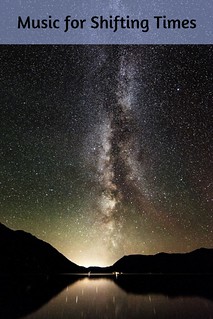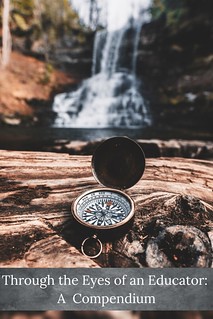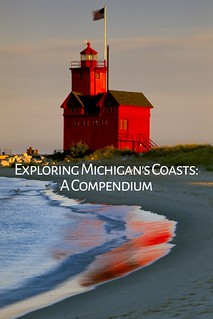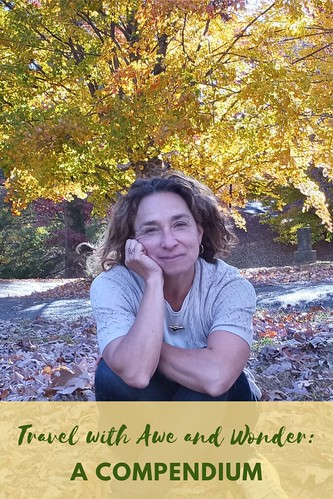Cairns: Messengers in Stone
You know those books – those that, once you’ve read them, you can’t imagine not KNOWING all the good stuff inside? Such is the case with an excellent new book, Cairns: Messengers in Stone. Written by Geologist David B. Williams, this is one of the best books I’ve read all year.

It focuses on cairns in all their glory – geology, ecology, on the trail, burial cairns, the role of cairns in expeditions, how to build cairns, and a global tour of cairns. Along the way, you’ll discover wonderful tidbits about cairns that you will want to share with anyone nearby (on the train, in the store, or your family, who if they are anything like mine, are all grabbing book time while I’m cooking or working). Here’s a delightful one – worms build cairns - and Darwin wrote about them! And, cairns such as Clava Cairns (which we explored in Scotland) are ancient burial grounds, with meanings historians are still uncovering.
Clava Cairns, Scotland
Expedition cairns (including ones made of lead cans) are incredible markers of a period of time. And the Vancouver Olympics even had a rock cairn, of sorts, for their official symbol. There's more - sex, hiking, secret messages, and even carbon dating. Once you read this book, you’ll notice cairns in every day life – even if you’re not out hiking! Needless to say, I LOVE this book.
We caught up with author Williams, to learn about his book, inspiration, background, the history of cairns, how to respect them, and more. And, he shared some wonderful cairn photos (and illustrations from the book) to give you a better idea of how cool they are. Here’s what he had to say…
Please tell us about your book, Cairns: Messengers in Stone...
It’s about those little piles of rocks best known as trail markers around the world. In addition to weaving together the natural history of cairns, including geology, ecology, and how to figure out how old they are, I focus on three themes. The first is communication, for cairns are arguably one of humanity’s earliest ways of sharing information. The second is connection, in that people often build a cairn or add a stone to one as a means of connecting to place, history, and/or family. And, finally, I write about cairns as a sign of community, of travelers, of hikers, of explorers; each time we build one or rely on one we are bonding with those who came before and will come later. Stories range from Antarctica to South America, from deserts to mountains, and from ancient to modern.

Cairn in the Enchantments, Washington - Ross Freeman
What inspired you to write this book?
Curiously, the initial inspiration, or idea for the book, came from the eventual editor of the book, who works for Mountaineers Books. We were drinking coffee together (we live in Seattle, after all), when she said that she always wanted to publish a book about cairns. Of course, I had seen cairns, relied on them, built them, and even destroyed many, but I had never really considered their history, meaning, and stories until then. When I began to dive into the subject, I discovered that cairns were far more fascinating and complex than I had ever imagined.

Cairns illustrations courtesy and copyright John Barnett, 4 Eyes Design
What is your background in natural history?
I have an undergraduate degree in geology. When I graduated, I moved to Moab, Utah, for a three-month-long internship with a non-profit field school, Canyonlands Field Institute. I stayed for five years during which I was a trip assistant on classes ranging from mushrooms to astronomy to geology. The instructors opened my eyes to the natural world around me, showing me the intertwining of plants, animals, and geology. Although I still view the world primarily through a geological lens, I am always looking at the relationships and connections of life around me and the stories they tell, whether it is in a national park or in my own backyard.

Cairn at the beach in Carmel, California - Marjorie Kittle
Was doing the research for this book interesting? What were the most challenging parts?
I love research and delving deeply into a topic. As I wrote earlier, I knew little about cairns when I started. It was great fun to try and track down stories and to try and bring together ideas that were not expressly about cairns and apply them to cairns. I view research as a mystery where I am trying to ferret out clues, whether they come from old newspapers, scientific articles, discussions with experts, or my own observations. In this age of the internet, it has become easier to do this but many, many details are not on the web and required some deep sleuthing. For instance, there is little written about the Icelandic cairns known as beinakerlingar. I had to track down someone who could translate Icelandic for me, as well as find researchers who had studied these structures. There aren’t that many but those who do were very willing to talk. One even told me “I think you are the first American to ever ask me about beinakerlingar.” That’s a pretty great feeling to be able to take his information and share it with others.

Cairns illustrations courtesy and copyright John Barnett, 4 Eyes Design
The origin stories for cairns are fascinating - do you think it has always been that way, that humans try to make sense of their world with both stories and physical symbols?
Great question. Yes, stories and physical symbols are defining characteristics of humanity. I think it comes from an innate desire to make connections, whether they are to place, friend, or family and story is one of most fulfilling ways we have of doing this. And out of story can grow physical symbols, which is one reason that cairns are so universal. Although a cairn is such a simple and basic symbol, when we see one, we know what it means. We know its story. We know that someone else has gone before. We know that we are not alone. And particularly on trails, finding a cairn when you are lost or misplaced can be one of the most reassuring feelings.
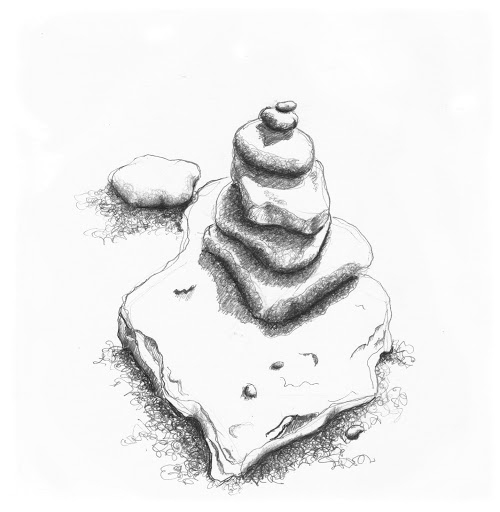
Cairns illustrations courtesy and copyright John Barnett, 4 Eyes Design
How can travelers best respect cairns, in their journeys?
I guess I would offer the idea of leave no trace, meaning don’t build cairns unless they serve a purpose and don’t mar them. Cairns have stood the test of time because of trust, trust that whoever built it did so for a valid reason and that they often did so to aid or out of respect for others. They may have built it as a trail marker, to honor someone, to provide a warning of a dangerous spot, or to note a territorial boundary. In each case, there is a story behind it and one that we should respect.
I will give you one example. In Colorado, there are cairns and associated structures that form game drives, where native people directed elk, deer, and bison to locations where they could be hunted. These cairns date back more than 7,500 years. Unfortunately, people have dismantled these ancient structures to make modern cairns and New Age medicine wheels. “Beyond the illegality of such acts of vandalism, it is robbing future generations of their heritage. When in doubt, don’t move a rock,” one researcher told me.
Continuing on that, should people leave cairns alone, or dismantle them?
It is a mixed message. I guess in regard to destroying them I, and most park rangers, do/did it in areas where we knew that cairns weren't supposed to be located, especially when we came across the cities of cairns I discuss in the book. In regard to when not to destroy them, I would offer two thoughts. If they look old, as in covered in lichens, then don't mess with them. Also, if you are unsure then it is probably better to leave them alone, though it is probably only in the rare locations where you have to worry about ancient cairns.

Cairn at Mt. Baker, Washington - David B. Williams
Is there anything else you'd like to share with us?
As I writer, I generally have a simple goal: to reveal the hidden stories that we walk by every day. I would encourage people to take the time to slow down, to put away their electronics, to observe the natural and cultural world around, and to ask questions. There are wonderful stories all around us if we are willing to look and listen. Cairns exemplify this. Nothing could be simpler than a pile of rocks and yet the story of cairns is one that is a story that reveals so many aspects of humanity.
Clava Cairns, Scotland
Thanks so very much, David! We highly recommend this book to our Wandering Educators!
To learn more, please see David's site:
Or head to the publisher's site to find this and more great reads:
http://www.mountaineersbooks.org/
Cairns photos courtesy and copyright:
Cairn at the beach in Carmel, California - Marjorie Kittle
Cairn in the Enchantments, Washington - Ross Freeman
Cairn at Mt. Baker, Washington - David B. Williams
Cairns illustrations courtesy and copyright John Barnett, 4 Eyes Design
Clava Cairns - Jessie Voigts
Note: We received a review copy of this wonderful book from the publisher, Mountaineers Books. Thanks!
-

- Log in to post comments


